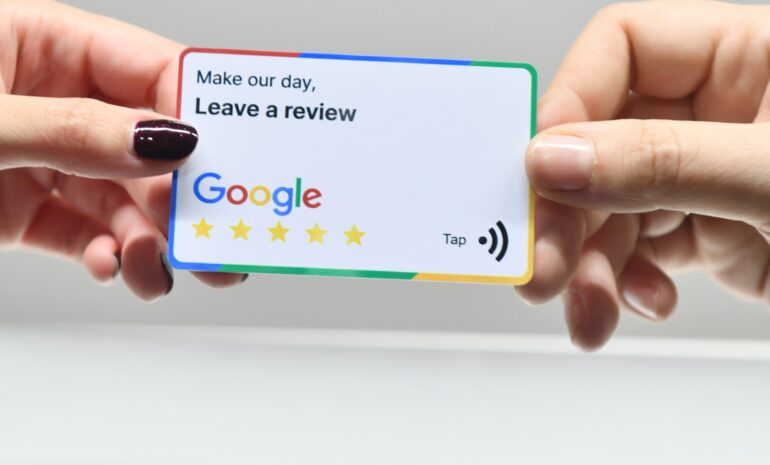In local SEO, few processes are more misunderstood or more critical than listing verification or business profile verification on platforms like Google My Business, Amazon Alexa or Gemini.
Whether you support franchise networks, multi-location businesses, or an SMB platform, to get a business profile live on Google, Yelp, or Apple Maps involves more than just submitting data. It means navigating each platform’s unique verification rules, timelines, and approval processes and doing so at scale.
For SaaS providers, this often becomes a bottleneck that can stall launch timelines, frustrate customers, and quietly kill SEO momentum. But verification isn’t something to fight, it’s something to master.
In this post, the first part of our definitive guide, we’ll walk through:
- Why verification exists
- How top platforms handle it
- What information you need from your clients
- Tips for streamlining the process
- And the upside of doing it right
Why Listing Verification Matters (and Why It’s Required)
Verification is how platforms ensure that the business information they display is accurate, trustworthy, and coming from a legitimate source.
It became essential because fake business profiles were polluting results, hijacked listings, redirected calls or web traffic to competitors and duplicate or outdated info created confusion for users.
To protect search integrity and the user experience, platforms began requiring business owners or authorized agents to verify control before listing data could be published or updated.
For SaaS platforms, this means your technology can push data but you still need to help clients earn the right to display it.
How Verification Works on Major Platforms
Each publisher handles verification differently, with their own preferred methods and failure points.
Google Business Profile (GBP)
Verification Methods:
- Postcard sent to the business address
- Phone call or SMS (select categories)
- Email to a domain-matching address
- Video recording or live video chat (increasingly used for bulk or service-area businesses)
What Google Needs:
- A complete and accurate business profile (name, address, phone)
- Proof that the business physically operates at the listed location
- Website or domain ownership (for email or DNS-based verification)
Where It Breaks Down:
- Postcards get lost or ignored
- Clients use virtual offices not accepted by Google
- Inconsistent NAP data triggers manual review
Yelp
Verification Process:
- Phone verification (automated call)
- Manual checks by Yelp moderators
- Review monitoring for authenticity and fraud detection
What Yelp Looks For:
- A real, working phone number
- Properly categorized services
- Evidence that the business is operating and serving customers
Frequent Issues:
- Spammy behavior triggers penalties
- Business owners forget to complete phone verification
- Multiple entries or review gating flags the profile
Facebook / Meta
Verification Types:
- Page verification via phone or business documentation
- Domain verification (meta tag or DNS record)
- Business Manager verification for advertisers and multi-location brands
Meta Wants:
- Control over the domain
- Transparent business operations
- Compliance with page and advertising rules
Information You Need from Clients Before You Start
To move smoothly through verification across platforms, SaaS providers should collect the following before attempting any profile creation or sync:
- Legal business name (exact match with registration)
- Physical business address (no PO boxes unless platform-approved)
- Public phone number tied to that location
- Website domain
- Business email that matches the domain
- Name and contact details of the person authorized to verify
This may sound obvious but it’s where most delays originate. Many platforms reject submissions over mismatched names, unverified numbers, or unsupported virtual offices.
Why It’s So Challenging… Especially at Scale
For single-location businesses, verification is usually just an extra step in the setup process. But for SaaS providers that manage hundreds or even thousands of profiles, it quickly becomes a serious operational hurdle. The primary reason is that the process still depends heavily on participation from the business owner. Postcards need to be received and acted on. Emails and phone verifications must happen within specific time windows. Video calls and documentation reviews require coordination.
Compounding the issue is the fact that each publisher uses its own method and set of requirements, which means platforms can’t rely on a single, repeatable flow. One client might breeze through Google’s listing verification, while another gets flagged for a video check. Multiply that inconsistency across hundreds of listings and your operations team is suddenly buried in follow-ups, support tickets, and escalations often with limited visibility into what step went wrong and where.
The result? A process that should take days can drag into weeks, undermining your time-to-launch, delaying visibility in local search, and creates frustration for your end users. And the more your platform scales, the more this issue compounds unless you build verification workflows into your system intentionally.
Making Verification Easier for Everyone
Instead of fighting the process, build it into your onboarding and communication flow.
Here’s how to simplify and speed up verifications:
- Automate your checklists. Include verification prep in your intake forms and emails.
- Set clear expectations. Tell clients how long each platform takes and what to expect.
- Remind proactively. Don’t assume clients will act on their own—automate reminders for postcard arrivals or pending steps.
- Create platform-specific instructions. A one-pager on “How to verify your Google Business Profile” is a time-saver for everyone.
- Use API-based platforms that return verification status. This is especially helpful for programmatic follow-up.
And if you’re using Local Data Exchange, we help automate status tracking and keep your listing health visible so nothing falls through the cracks.
The Upside: Why Listing Verification Is Actually a Good Thing
Despite the added friction, verification plays an essential role in maintaining the quality and trustworthiness of local search ecosystems and ultimately benefits the businesses that go through it. Verified listings are treated with greater authority by search engines. They’re less likely to be hijacked, overwritten, or suppressed by conflicting data sources. They also unlock important functionality: Google, for instance, won’t allow businesses to manage reviews, run Local Service Ads, or track profile insights without verification.
More importantly, verified listings give consumers a signal that the information they’re seeing is legitimate. In a digital landscape where trust can be hard to earn and easy to lose, that simple verification badge makes a difference in how potential customers perceive a business. Higher click-through rates, better conversion potential, and increased engagement tend to follow.
In short, while the process can slow you down at first, it sets the stage for better long-term performance, both in rankings and in real-world business outcomes. SaaS providers who build around verification—rather than treating it as an afterthought—position themselves and their customers for greater local visibility and operational trust.
Key Takeaways for SaaS Platforms and Agencies
If your platform helps businesses get discovered locally, you must treat verification as a core part of your process and not an edge case.
To recap:
- Understand how each publisher approaches listing verification
- Standardize the client data you collect up front
- Build verification prompts and instructions into your UI or onboarding flows
- Choose tech partners who return real-time submission and status updates
The brands that move fastest through verification win visibility earlier…and keep their customers happier longer.
Struggling with inconsistent verification delays across platforms?
Our Listings API helps streamline verification workflows so your customers get published faster—with fewer headaches.


